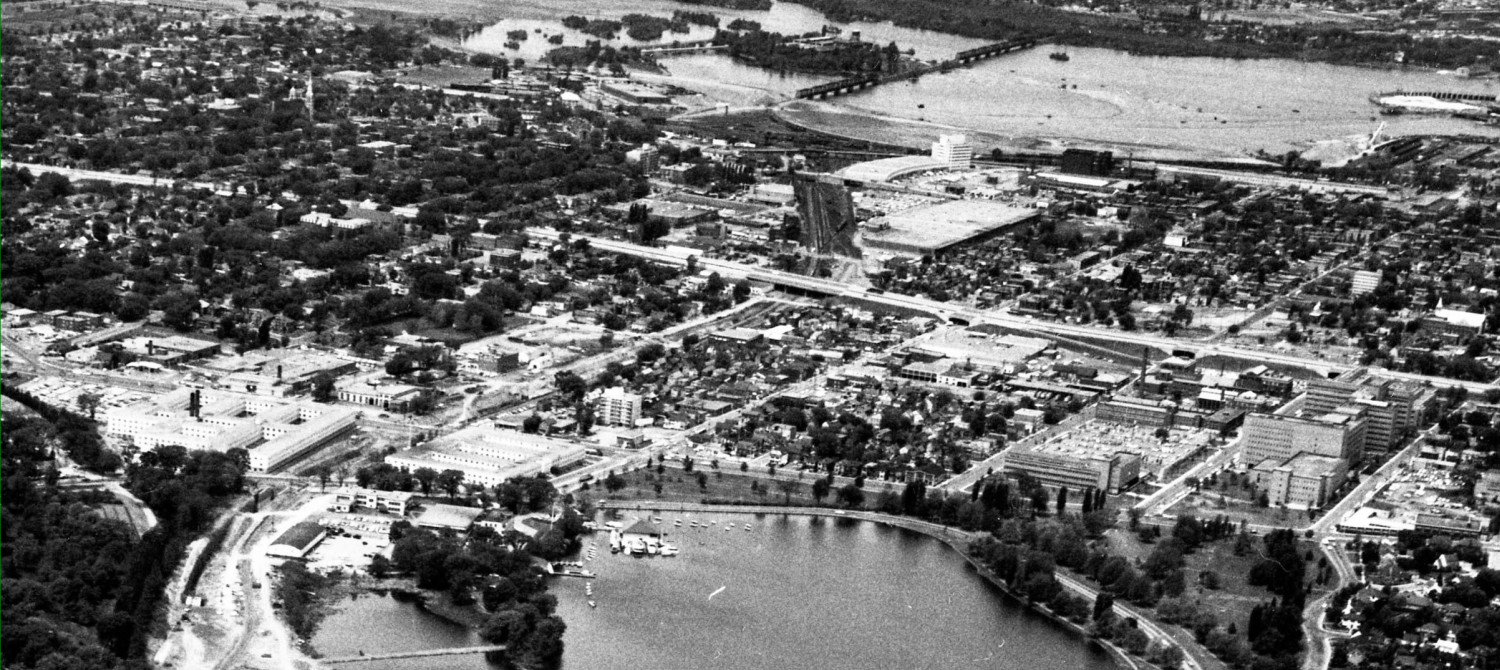The net is an amazing place. Following links on the Greater Ottawa blogsite to stories on naked intersections, I end up a dozen sites away, I can’t remember how I got there, and sometimes only peripherally related to the original story that started the links. Other times the links are exciting reading, and I find myself wanting to subscribe to this or that RSS feed (astoundingly, so many sites do not make it easy to subscribe or follow them…).
Naked streets, or naked intersections refers to the latest Dutch planning fad of removing all traffic signs, signals, and painted lines, curbs, bollards, or other guidance, from an intersection or street and letting every user figure out how to use the space. The results are supposed to be marvellous cooperation, a veritable wiki, wisdom of the users.
I wonder how many of these spaces originated in pre-auto cities where pedestrians have a fighting chance against autos. Or in legal environments (like Holland) where anyone who hits a cyclist is presumed guilty). Our cities, in contrast, are built for cars and trucks, with only a slight nod to pedestrians as a necessary evil to be coraled away. We North Americans also have a real sense of entitlement, that everyone must yield to what we want, when we want it.
I notice that the Dutch examples all use cobblestones and some obstructions to direct traffic and guide the interaction. This reminds me of the first wave of Dutch traffic calming. In the late 1970’s early 1980’s, the woonerf was the imported rage. In my west side neighborhood of LeBreton Flats, about 600 housing units were built between Albert Street and Primrose.
The numerous off-street courtyards were sold as wonufs – mixed use spaces where children played on their trikes while moms chatted and the odd car moved slowly amongst them to the front door parking space provided for every unit. These wonufs were always shown with trees scattered through the paved areas, shrubs beds along the side, fancy brick pavings instead of asphalt. What we got, of course, was seas of asphalt because it was cheap and the housing was to be delivered at affordable prices. The trees and shrubs disappeared, ruled out by the fire dept and the needs of snowplowing. Or, in the case of City Living, once the units were occupied lawn areas were paved over to become parking, and guest spaces became reserved for residents.
Subsequently, some woonerfs appeared on much more expensive housing (still without tree islands) as courtyards paved in decorative paver patterns. But they never come close to the artist impressions when the concept was first all the rage.
When cycling in France a few years ago I was impressed by the aggressive traffic calming measures employed in new suburbs, but like Holland, these were in areas with minimal snow fall, no frost, and upscale buyers. For the ordinary joe, traffic circles are giving way to signalized intersections (or that bastard hybrid, signalized traffic circles), roads are wider, straighter, faster, and the pedestrian is being left behind.
Labelling a giant asphalt parking lot or a townhouse laneway as a woonerf did not make it one. Glueing sidewalks to suburban cresents does not a pedestrian environment make.


Woonerf.
– RG>